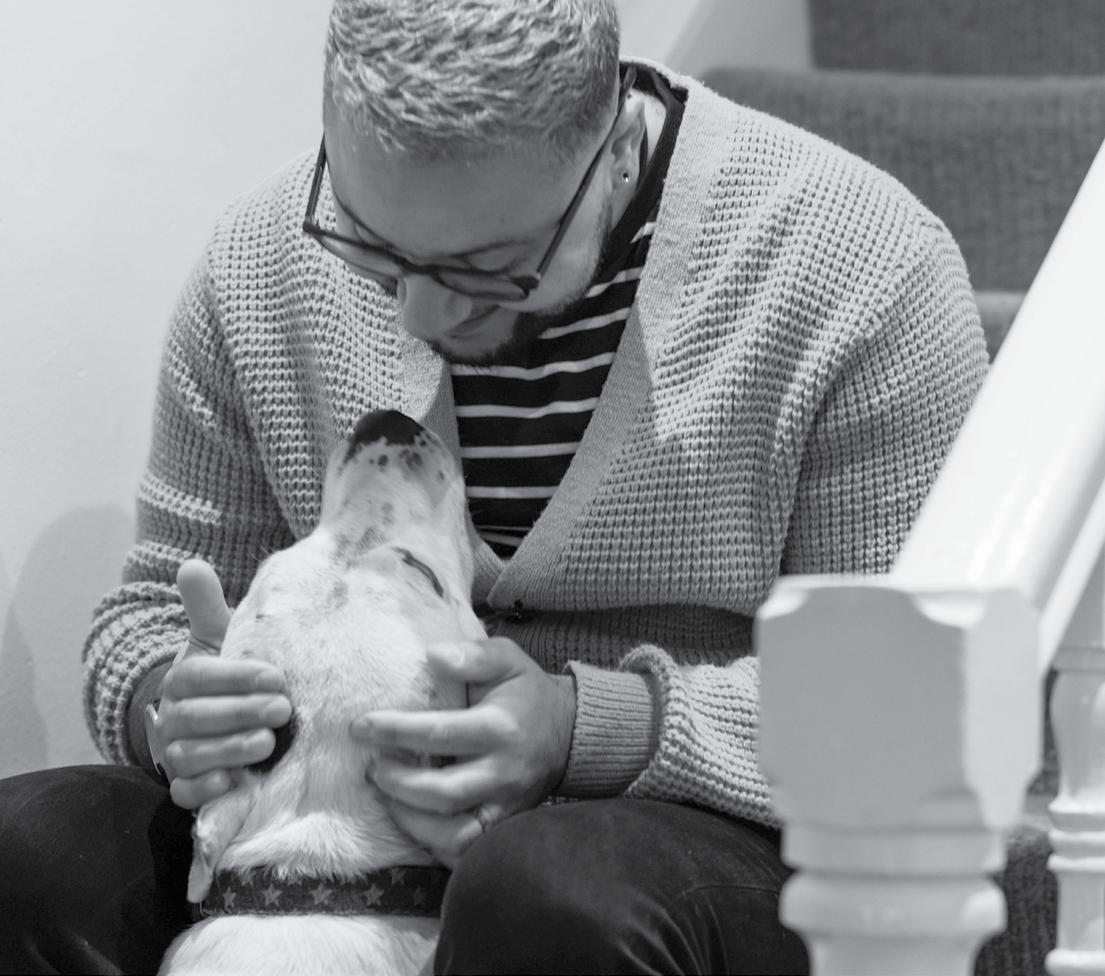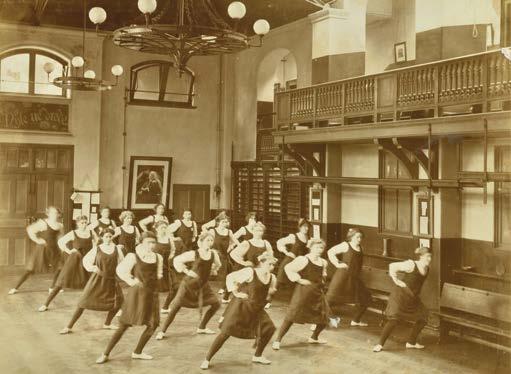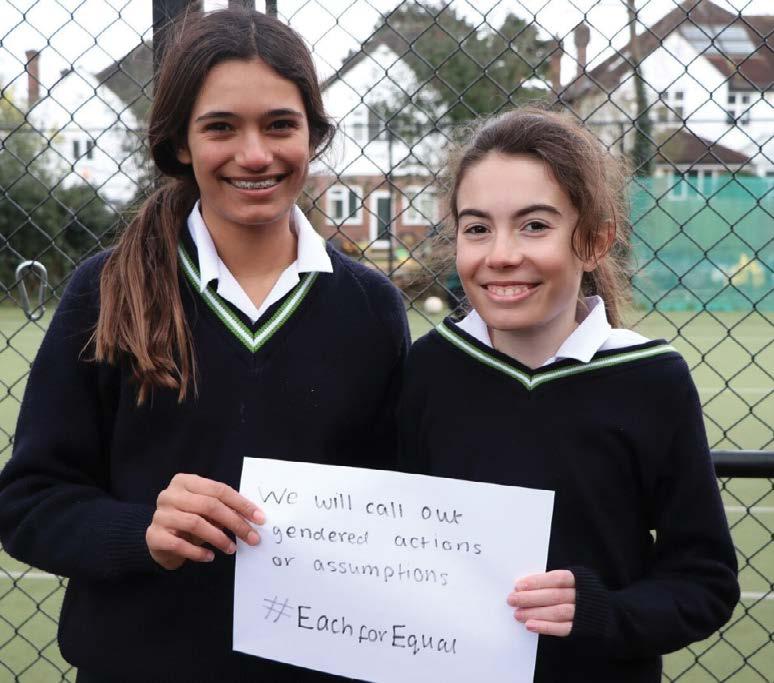
7 minute read
Change Maker
FROM ALUMNA TO ALUMNUS
A LONG AND WINDING ROAD
Advertisement
The transgender conversation has become something of a political football, particularly in the media, where a polarisation of views – finding a ‘right’ and a ‘wrong’ side in the debate – is the singular mission. When this happens, it’s easy to lose sight of the people whose lives are affected.
We spoke to GDST alumnus, Adam* to hear his remarkable story: about an identity shaped not just around gender, but also his Black heritage and neurodiversity.
Adam takes up the story here. “I moved to the North-West when I was one, and won an assisted place to a GDST school from 11-18 years old. Despite being raised as a girl, I had a sense - from about the age of four – of my internal compass being male. Until the age of 10, I would pray that I’d wake up as a boy. I’ve always loved books and always had a really rich internal world, so I retreated into my mind to the person that I wanted to be - a fantasy world that felt congruent to me.
“I really struggled with my mental health and was suicidal for many years. Some of it was related to the difficulties I experienced as a result of undiagnosed neurodiversity. But I also couldn't see who I was supposed to be. Even though I knew womanhood could be varied, and that I didn't have to be stereotypically 'girly' to be a woman, I just couldn't see a future for myself as a woman. I was 26 years old before I discovered nongendered pronouns, and made the decision to live as my authentic male self when I was 28. Being able to accept myself as trans, and integrate that afterwards, that led to self-acceptance in other aspects of my identities.”
Adam points to the high rates of depression in the trans community, with 46% of trans people polled in the UK (Stonewall, 2018) reporting that they had thought about taking their own life.
“Transgender individuals have an internal sense of their gender that differs to the gender they were assigned at birth based on their visible sexual characteristics. So there’s that internal incongruence to begin with. Then there are societal issues – wider structural ignorance of transgender issues, to misinformation about transgender rights, to beliefs that being transgender is a form of mental illness, or that it contravenes religious thought or doctrine. All of which creates stigma, which in turn leads to discrimination. We know that experiences of stigma and discrimination have been linked to poorer physical and mental health outcomes in nontransgender populations – and so it is with the trans community, too.”
Adam talks about his school days with mixed feelings, although he says that “there were people in every class” that he could talk to, and he would often develop relationships with pupils in the years above him, or teachers. Two staff members particularly stand out for him: his school librarian, and his DT teacher.
In the early 2000s, when Adam was at senior school, schools everywhere were less attuned to intersectionality as something to care for in their students. While the term ‘intersectionality’ was coined in 1989 by the American academic, Kimberlé Crenshaw, it took more than 25 years for it to move into the mainstream, being added to the Oxford English Dictionary in 2015 and becoming common parlance a couple of years later.
Adam was dealing with a great deal more than dysphoria when he was at school, as his dyspraxia, ADHD and autism were not diagnosed until 2018 and 2019. Looking back at his school days, however, he believes the signs were all there. He recalls, “I experienced a lot of sensory overload at school – noises, smells, the music on the radio in the common room... So I would go down the stairs to a landing and sit on a sofa with my earphones in and read, to then be told that I should make more of an effort to socialise”.
Why was the autism diagnosis so late in coming? “It takes a lot longer for people assigned female at birth to be diagnosed with things like autism/neuro-divergence”, he says, explaining his experience of how intersectionality works, in a nutshell. “There is a misleading narrative that Black girls are more aggressive. I felt at school that people did not want to hear from me or wanted
to discount or dismiss what I said. So, the question here is, are you more likely to be read as aggressive because you are seen as a Black girl, rather than neuro-divergent?”
Flipping this around, he now firmly believes that his autism is a real strength. “Autism is the lens through which I look at the world,” he says. “I've never cared about popular opinion, and this may have been read as contrariness or stubbornness at school. Inflexible or rigid thinking is often identified as a key autistic trait, but this often relates to how autistic people are expected to adapt to a world that is built for neurotypical people. We are much more likely to call things out. A dedication to social justice and strong morals are autistic traits. Another is having less of a sense of boundaries: in the past I may have transgressed others' unspoken social boundaries without understanding (I recognise now that some of the relationships I would strike up with teachers may well have been tricky for them to manage) but I am learning how to respect others’ boundaries, and also develop my own.”
When asked what he’s proudest of, he cites his natural curiosity. “This means more to me than anything. It takes me everywhere. The fact that I can be asking questions about what it is to be a woman, or why do I have to be “he” or “she” is because of this curiosity.”
As we wind up the call, Adam reflects on where he is now, and what’s next for him. “I am comfortable in my own skin.” After a long and sometimes bumpy road, he says, “Having accessed some genderaffirming interventions, I am not currently experiencing dysphoria. Instead, I am experiencing gender euphoria.” Asked if he had one piece of advice for his younger self, he thinks for a moment before he replies, “You will be the person that you see in your head. It will happen. You are enough.”

This interview took place in the summer of 2021 and, since then, the GDST has started the process of updating our gender identity policy in collaboration with students and staff. We are currently listening carefully to members of our community. The transgender conversation is an extremely important one and ultimately the views, opinions and beliefs of students, parents, staff and the wider school communities will shape the GDST’s approach in the long term.
Sydenham High School

2022 heralds Sydenham High School’s 135th birthday! The school is incredibly proud of the first-class education delivered since the first 20 pupils entered its doors on 22 February 1887. Its four Houses enshrine the values and determination of the GDST’s four pioneering founders; Maria Grey, Mary Gurney, Lady Stanley of Alderley and Emily Shirreff.
History shows Sydenham High’s ability to overcome adversity, from its evacuation to Brighton during the Second World War to the devastating fire in school in 1997. As the whole community celebrates 135 years of Sydenham High, time will be taken to remember and appreciate all those who came before, with the sense that a new, empowering history is currently in the making – to last for another 135 years and more. Speaking about the anniversary, Headmistress Katharine Woodcock said, “It’s our community that makes us what we are, and we hope that you’ll be able to join with us during our birthday year to celebrate in the true spirit of Sydenham High.” SCHOOL NEWS

Wimbledon High School
Capturing the zeitgeist in terms of culture wars, cancel culture and the toxic binary debates that social media engenders, in September Wimbledon High School began teaching Civil Discourse lessons.
“Fear not – ‘civil’ in this context has nothing to do with politeness, or a stereotypically female notion of being ‘good,’” explained Head, Fionnuala Kennedy. “Rather, civil can be about what is best for the greater good, and maybe saying things which agitate and disrupt and yes, perhaps offend. But it’s about freedom of speech and not freedom of consequences from what is said.” The lessons encourage intergenerational conversations to try and build greater understanding of different viewpoints. The programme's official launch in the autumn saw students questioning guest speaker and author of Communicate for Change, Genelle Aldred. WHS will be looking for input from alumnae, many of whom are no strangers to the good fight! Those interested should head to the alumnae section on the school’s website.











